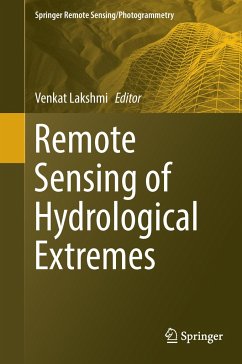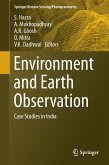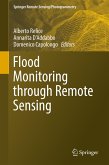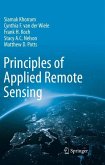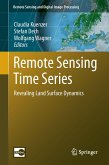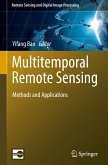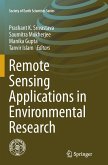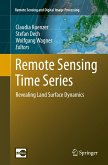This volume provides in-depth coverage of the latest in remote sensing of hydrological extremes: both floods and droughts. The book is divided into two distinct sections - floods and droughts - and offers a variety of techniques for monitoring each.
With rapid advances in computer modelling and observing systems, floods and droughts are studied with greater precision today than ever before. Land surface models, especially over the entire Continental United States, can map the hydrological cycle at kilometre and sub-kilometre scales. In the case of smaller areas there is even higher spatial resolution and the only limiting factor is the resolution of input data. In-situ sensors are automated and the data is directly relayed to the world wide web for many hydrological variables such as precipitation, soil moisture, surface temperature and heat fluxes. In addition, satellite remote sensing has advanced to providing twice a day repeat observationsat kilometre to ten-kilometre spatial scales.
We are at a critical juncture in the study of hydrological extremes, and the GPM and SMAP missions as well as the MODIS and GRACE sensors give us more tools and data than were ever available before. A global variety of chapter authors provides wide-ranging perspectives and case studies that will make this book an indispensable resource for researchers, engineers, and even emergency management and insurance professionals who study and/or manage hydrological extremes.
With rapid advances in computer modelling and observing systems, floods and droughts are studied with greater precision today than ever before. Land surface models, especially over the entire Continental United States, can map the hydrological cycle at kilometre and sub-kilometre scales. In the case of smaller areas there is even higher spatial resolution and the only limiting factor is the resolution of input data. In-situ sensors are automated and the data is directly relayed to the world wide web for many hydrological variables such as precipitation, soil moisture, surface temperature and heat fluxes. In addition, satellite remote sensing has advanced to providing twice a day repeat observationsat kilometre to ten-kilometre spatial scales.
We are at a critical juncture in the study of hydrological extremes, and the GPM and SMAP missions as well as the MODIS and GRACE sensors give us more tools and data than were ever available before. A global variety of chapter authors provides wide-ranging perspectives and case studies that will make this book an indispensable resource for researchers, engineers, and even emergency management and insurance professionals who study and/or manage hydrological extremes.

